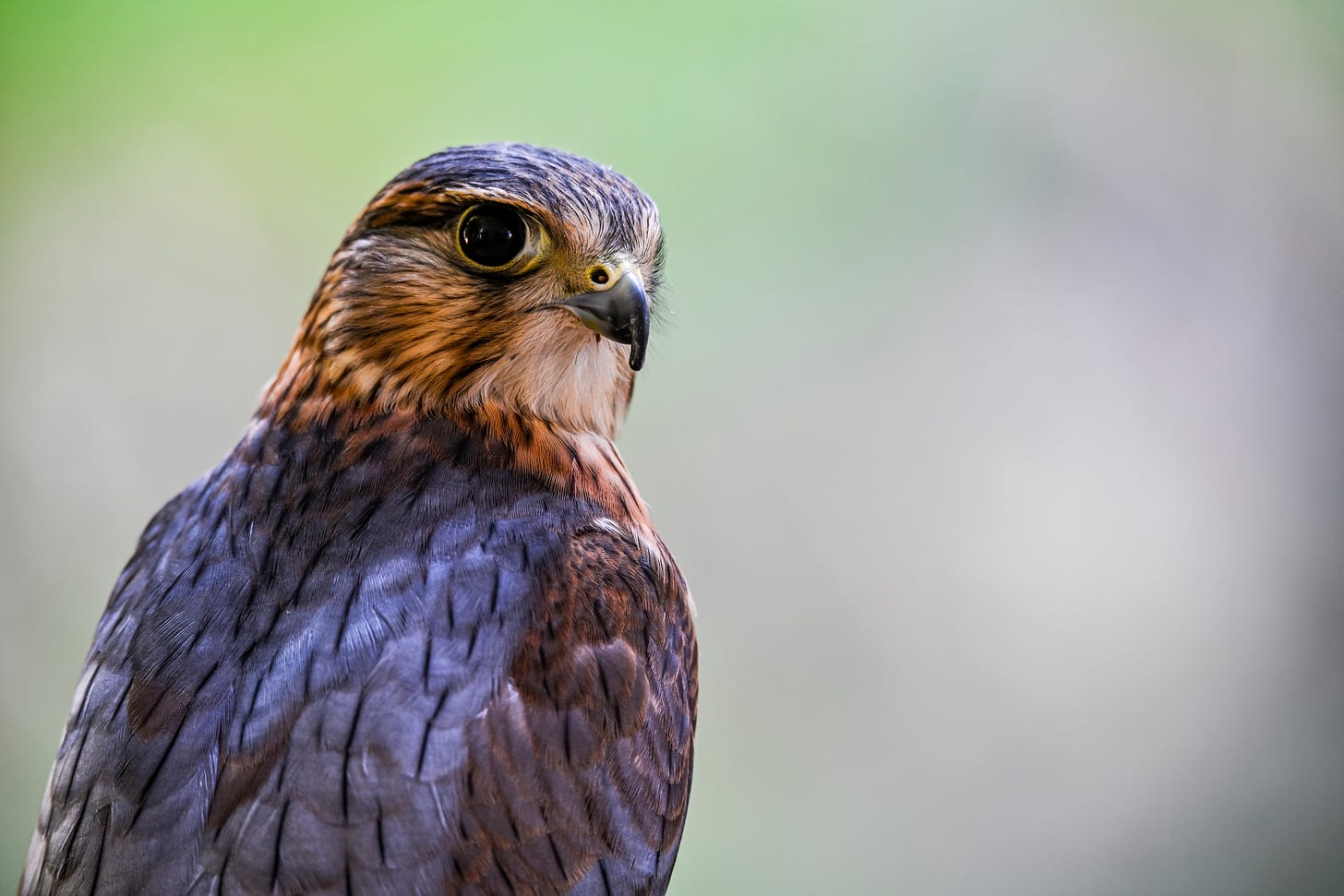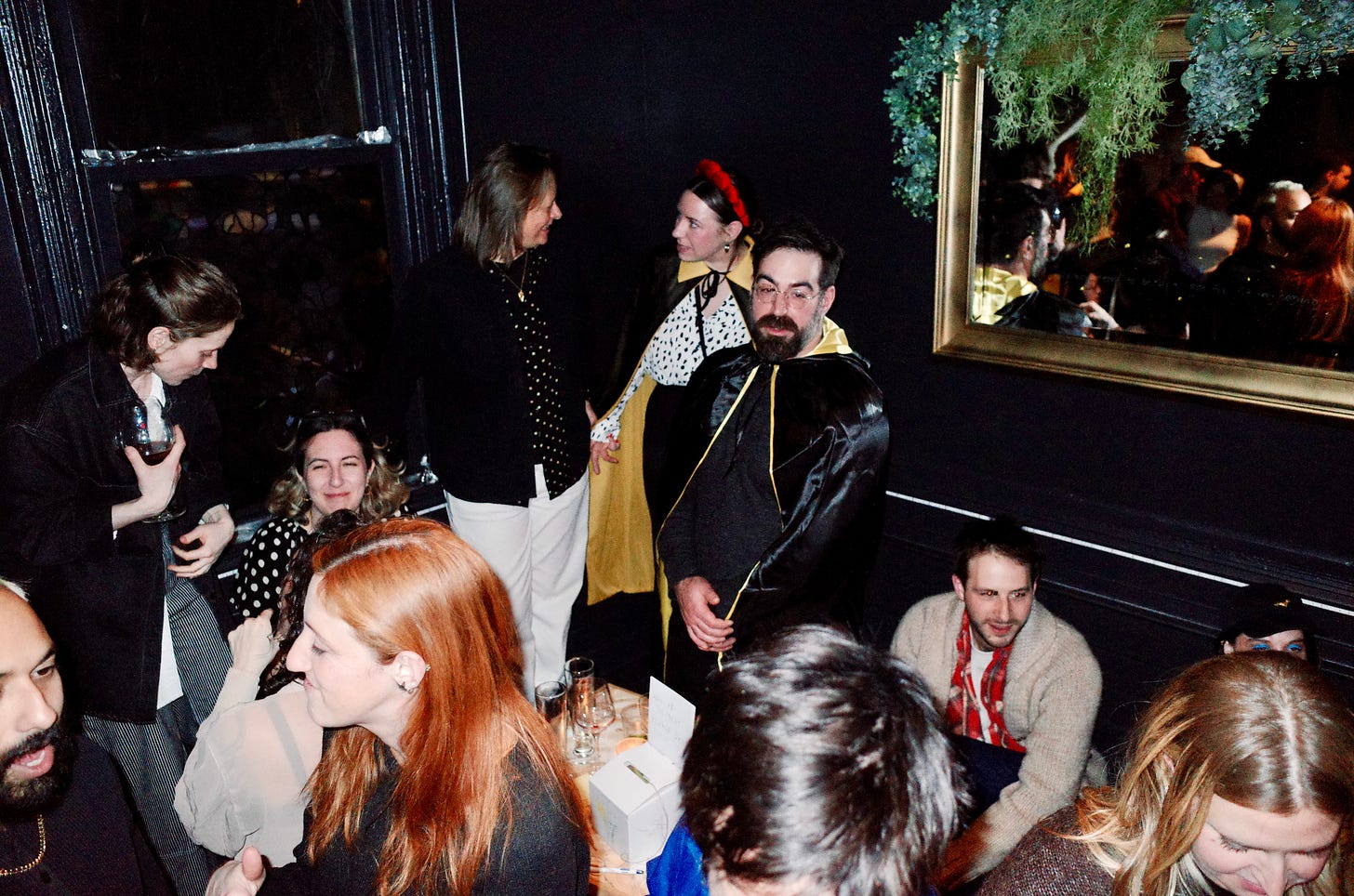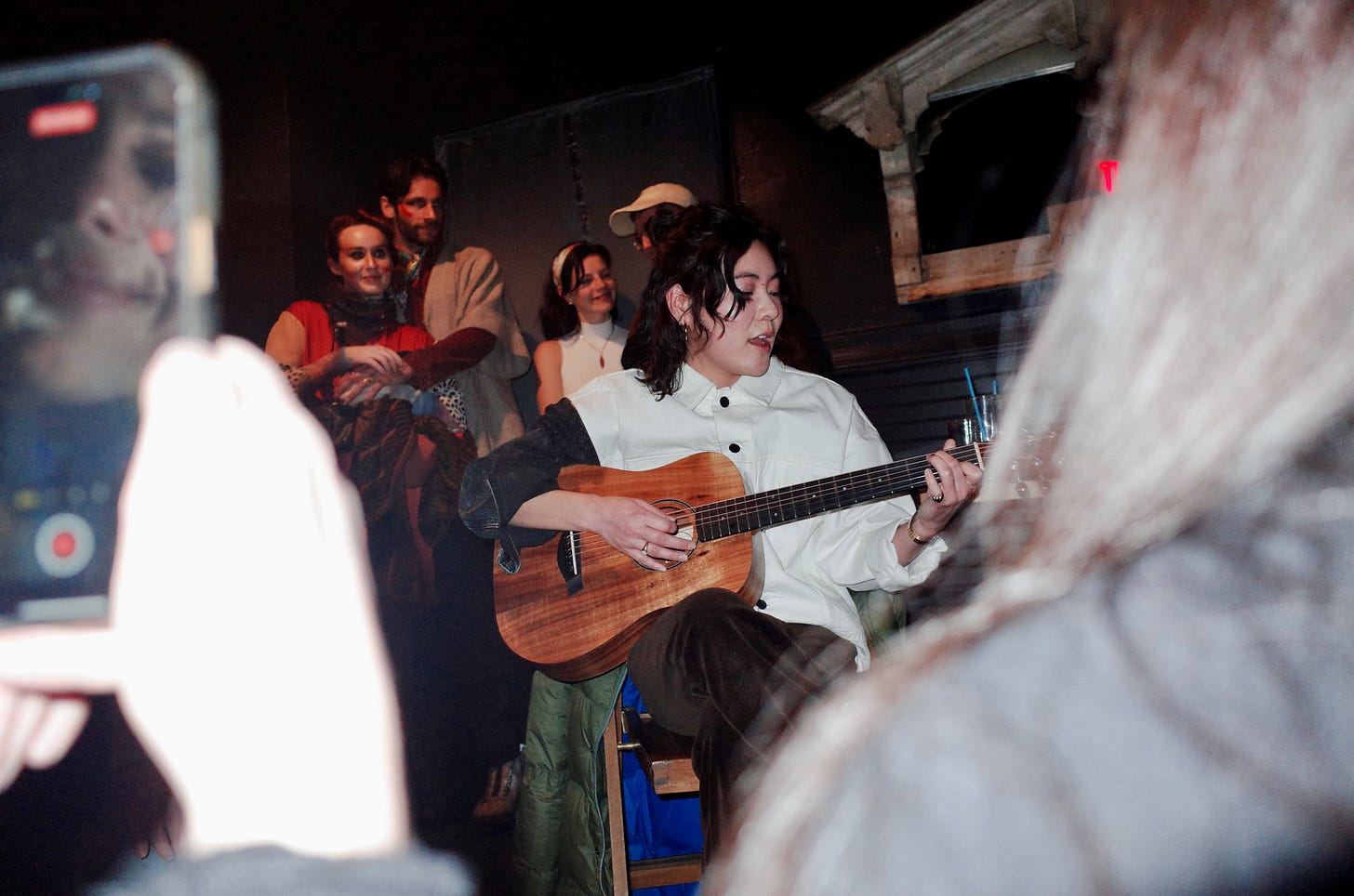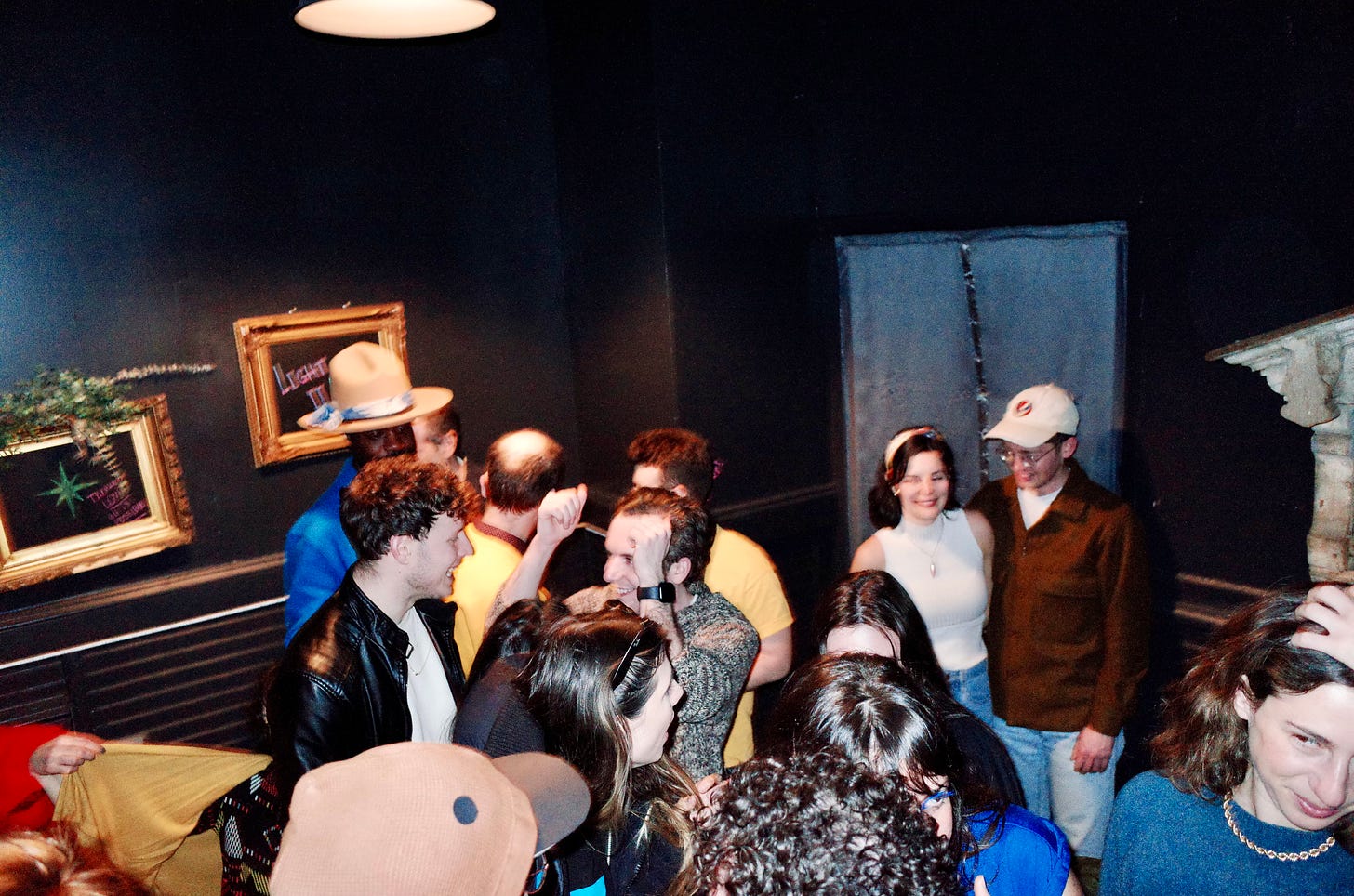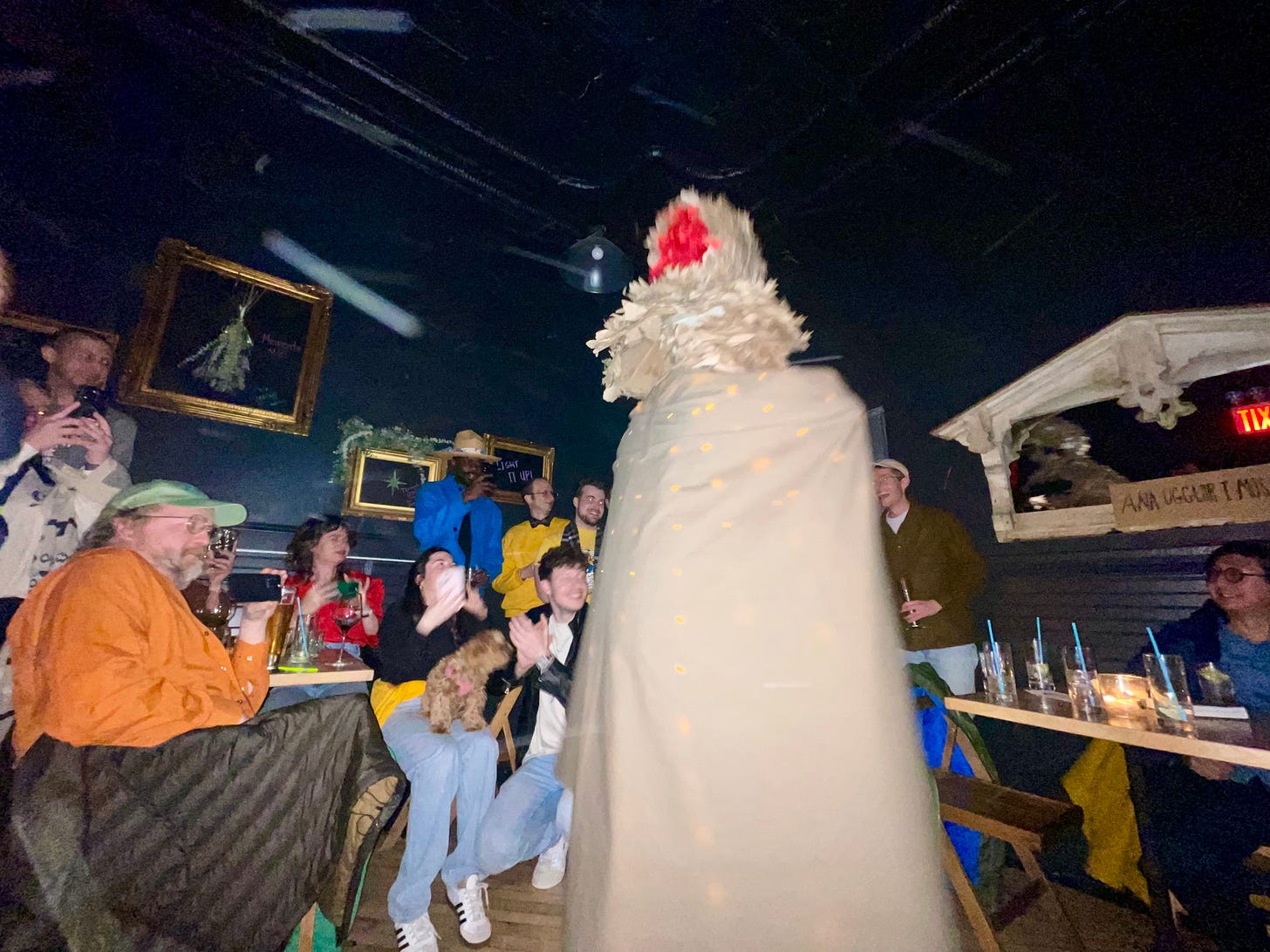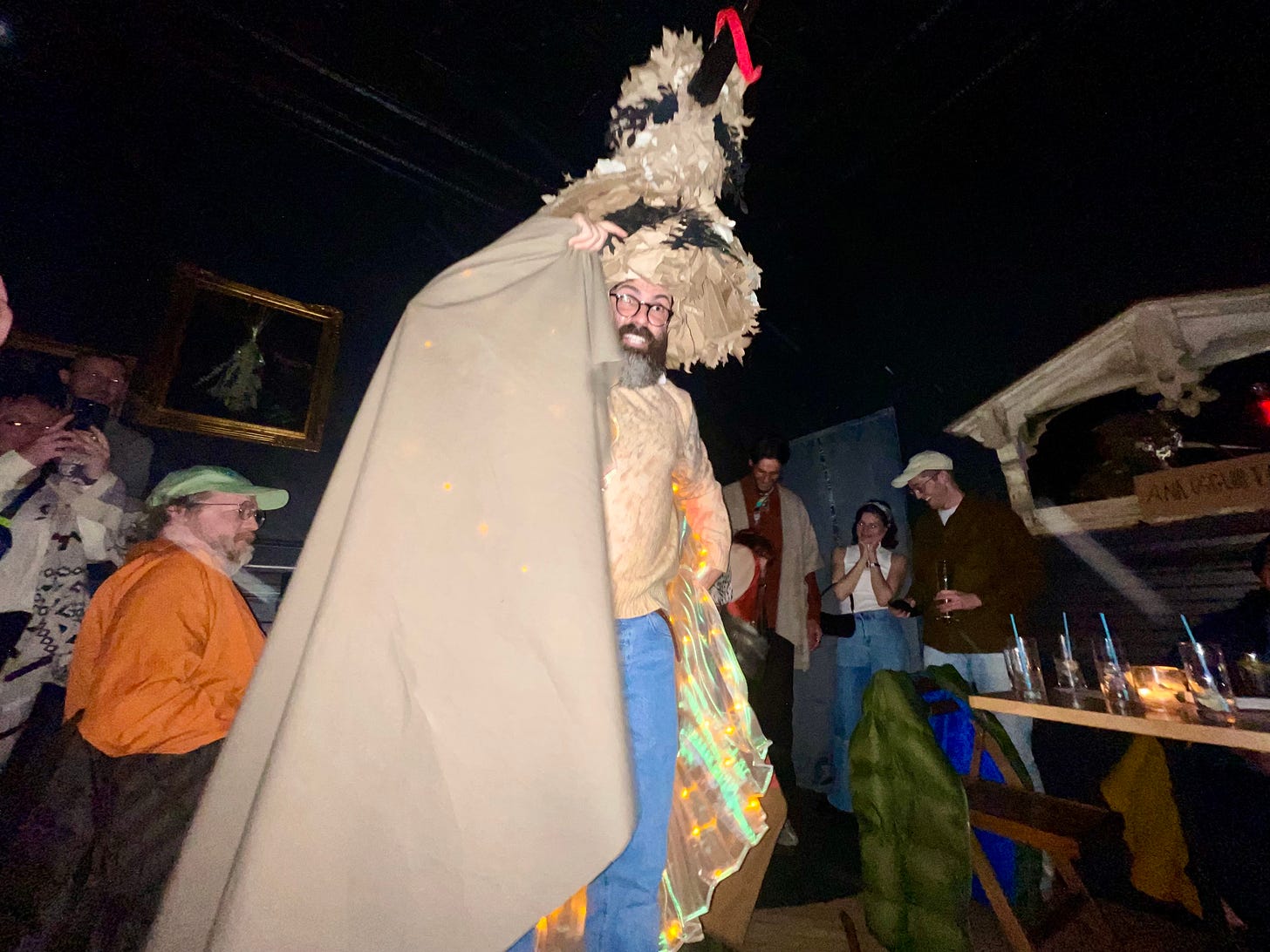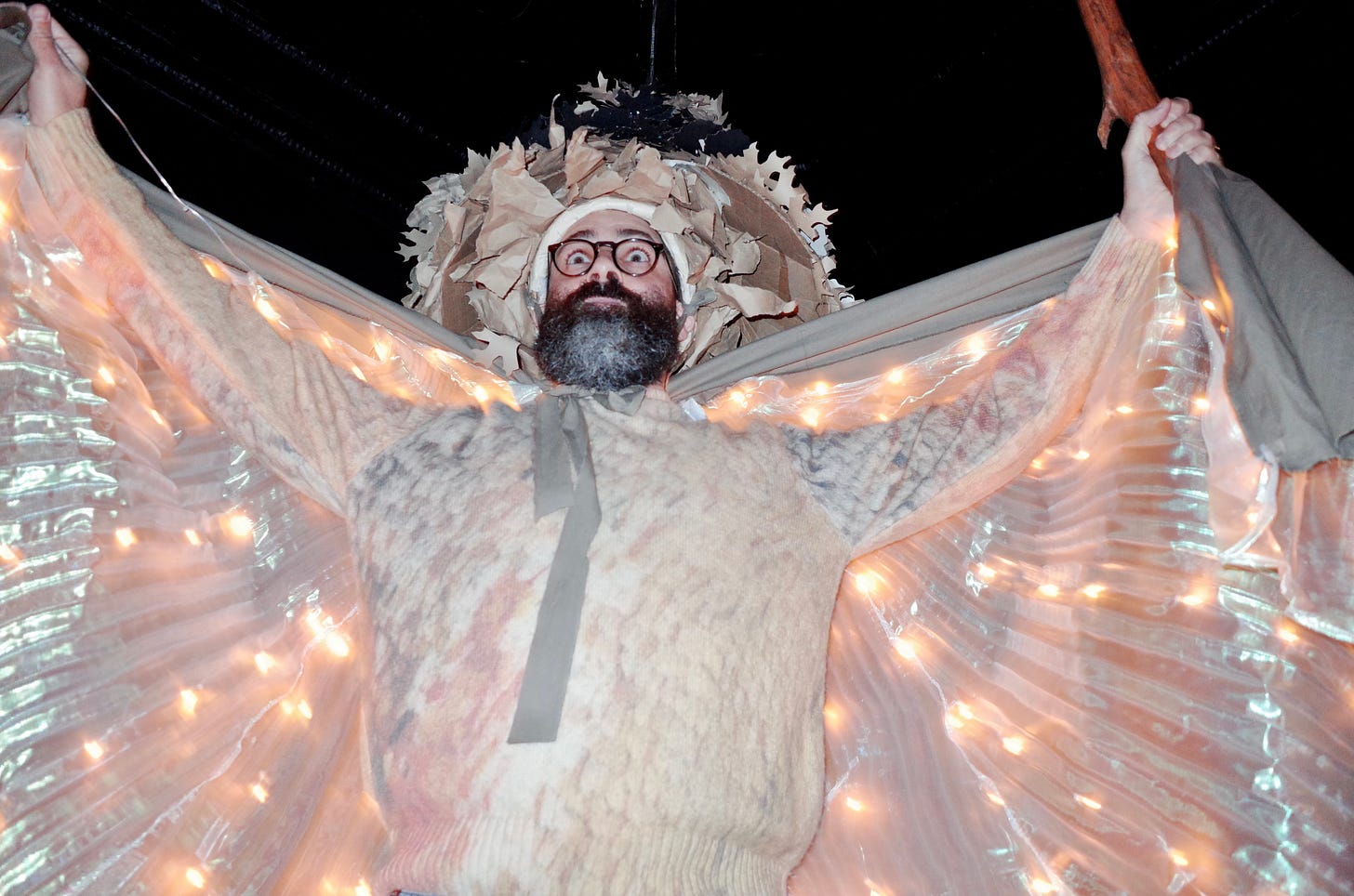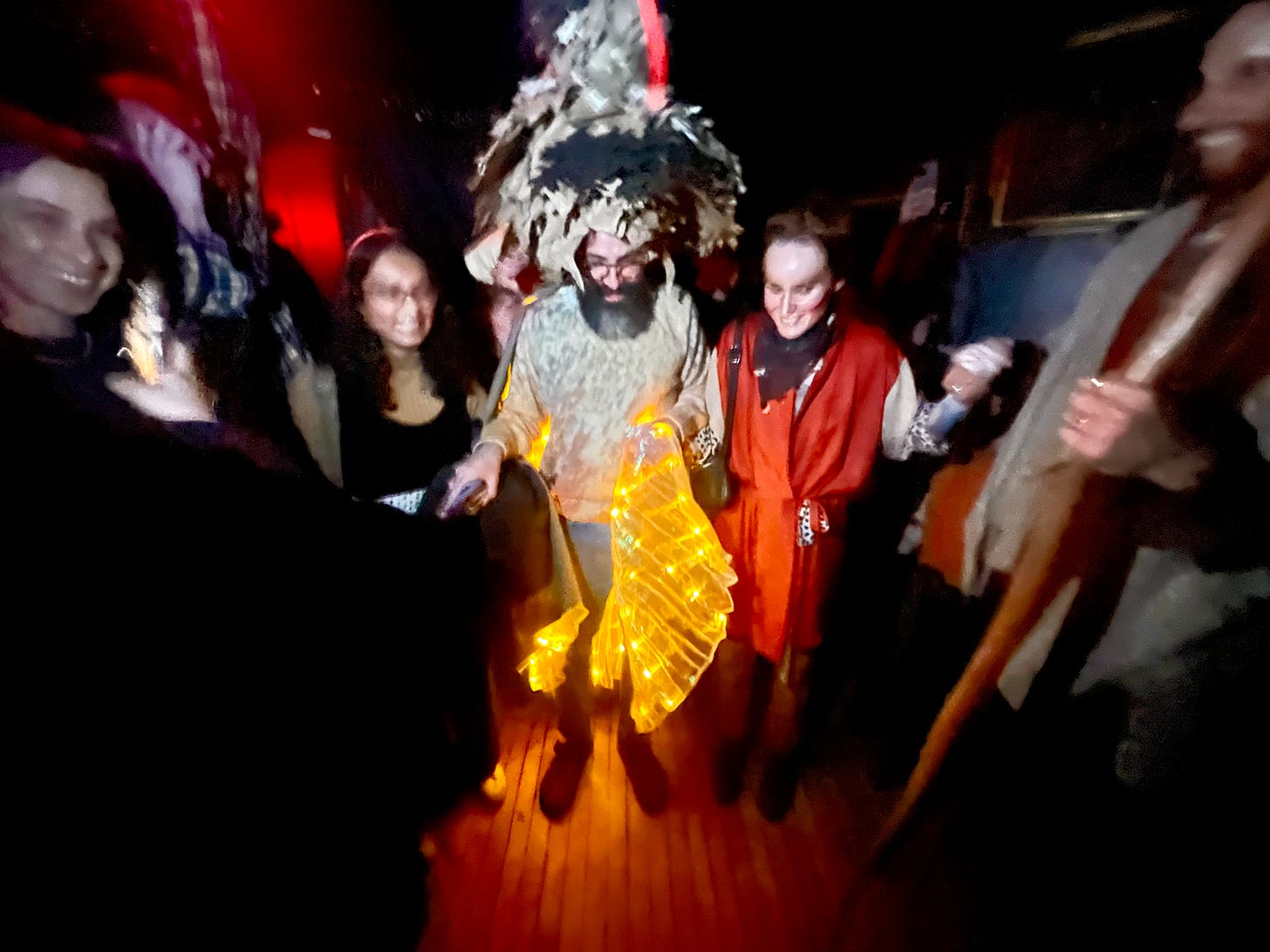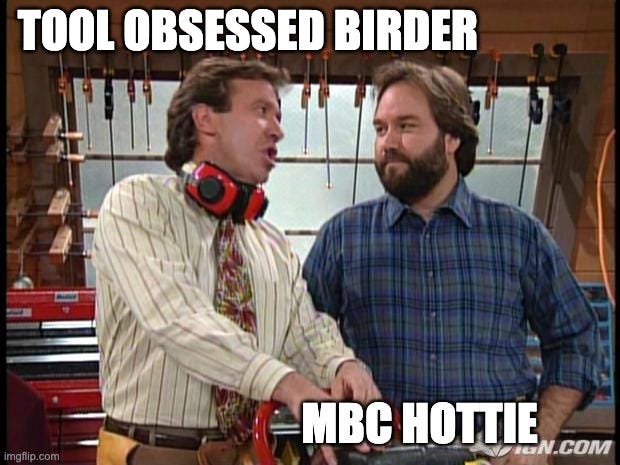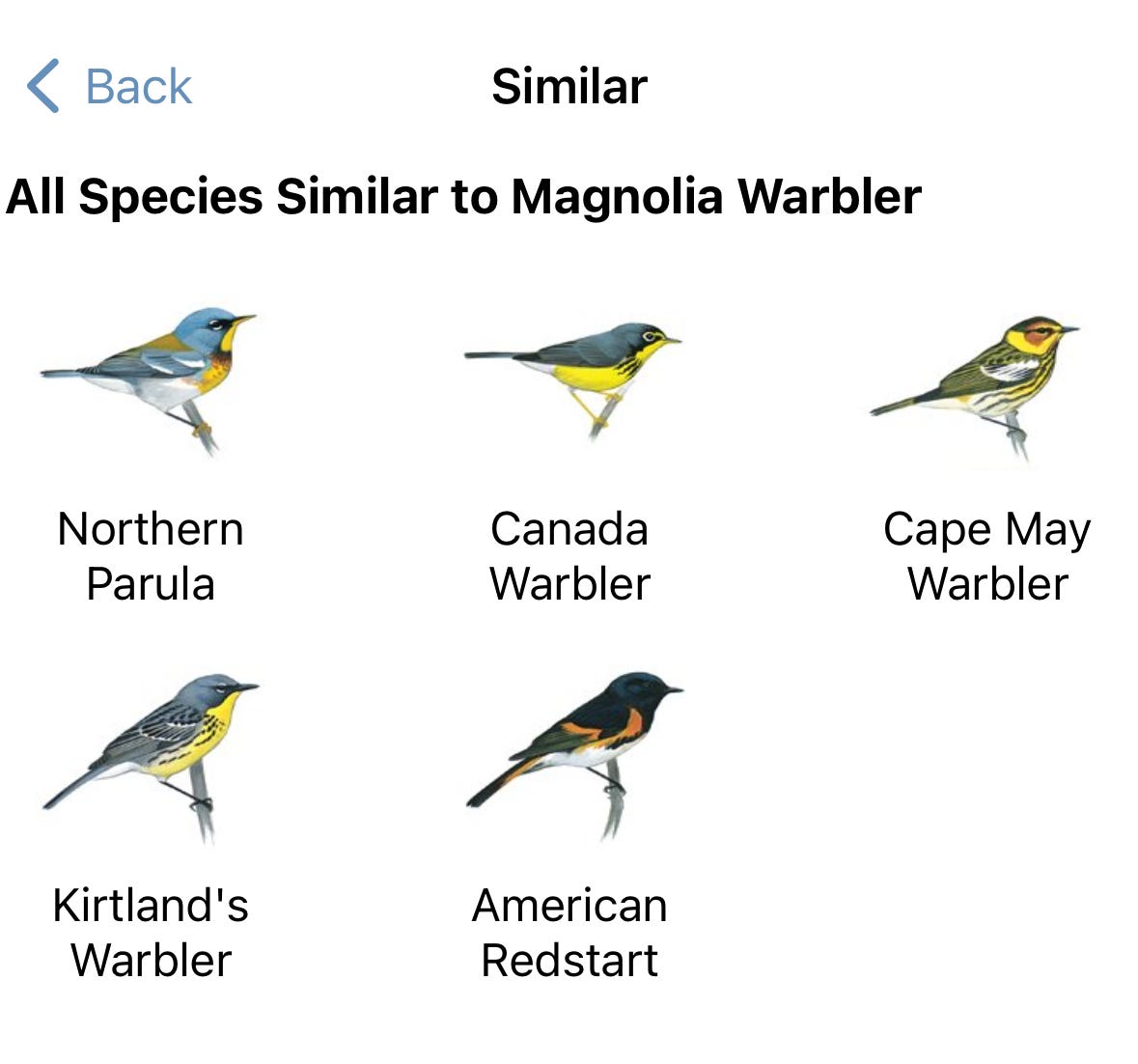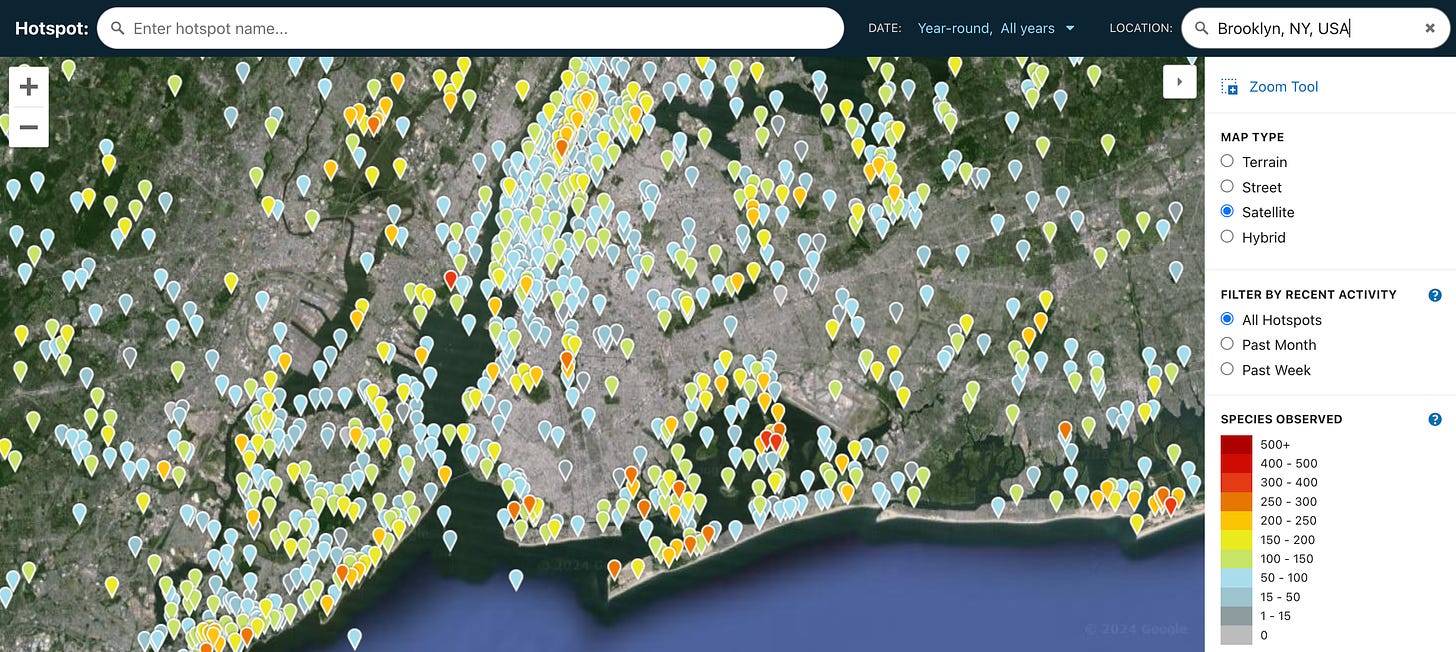#11 MARCH '24
In which we lean towards online tools with the subtle precision that our habitable celestial body does its closest star.
Welcome back. Happy March. Joyous Ostara*. Splendid Vernal Equinox. And a Very Festive “Hibernating insects surface” Japanese micro-season to y’all. We’re very glad to see you. Current mood:
*February Readers will know that one should not get us freakin’ started—grace or no—on “Easter’s” paving over Pagan Ostara, like so much park turned parking lot 😤
UPDATES & ANNOUNCEMENTS
Bird-safe Your Greenpoint Home, Courtesy of MBC! On the heels of Flaco’s passing, it bears mentioning that we’re often approached by neighbors sharing the sad news (and even sadder photos) of dead birds. Cause of death? Glass. Birds weren’t designed to co-exist with the stuff. (Same re: rodenticides, the main cause of untimely deaths of birds of prey like Flaco.)
Because spring migrants are coming, and because Audubon’s resources, while comprehensive, are onerous, we’re putting together the materials, manpower, and money to either subsidize or completely cover the costs of making your window or balcony bird-safe. DM us.
On February 24th (shoutout Dale Cooper) we threw a Full Moon + Bird of the Year + Bird Sex Party. (NB: That’s bird sex party not bird sex party.) Our efforts have no doubt ensured the Northern Flicker’s reproductive success in ‘24. Thank you for turning up. Thanks to Tammy Hsu for sharing her musical talents, to Julia Scinto for her visionary planning, and a SPECIAL 7-ft. tall thanks to Izzy Lezcano, for her brilliant engineering and artistry.

Full 📸 series by street photog + OG clubber Dan Gaba, below.
Ana Ugglor I Mossen. What does it literally mean? We’re bound to secrecy. If you live in Greenpoint, make sure to carefully review all links in this newsletter. 🤫
NOTICED & NOTICING
We kicked it with 24 bird species in McGolrick Park last month. List here.
New Bird Who Dis. On February 21, we noticed a Merlin—an uncommon falcon who’s bigger than an American Kestrel, smaller than a Peregrine—perched on St. Stan’s highest cross. The Merlin was a “First seen” on eBird, bringing McGolrick’s species count to 108.
We Hosted 3 Free, guided, Punk and Metal Saturday Sessions. Readings: Jenny Odell and Mary Oliver. Vibes: g-o-o-o-d.
On March 2, we field tripped to Brooklyn Bridge Park! Highlights include an American Woodcock and a Yellow-rumped Warbler.
On March 4, a handful of Red-winged Blackbirds passed through McGolrick. The species is uncommon for our patch, as they prefer places with standing water sources. Because rain makes our park go puddly, be on the listenout for their piercing CONK-LA-LEEE! call.
Our senses are also turned up for Eastern Phoebes, who—according to historical data—may arrive in McGolrick by month’s end.
A RITE TO REMEMBER
In a distant utopian future, when/where humans have successfully re-wilded an again healthy earth, schoolchildren will make approving gestures—comm’d telepathically to one another by sporulated clouds in some digital microbiome—at a textbook featuring the below photos of our party.
Chapter’s title? “Rise of the Flicker People.” Photos by Dan Gaba.
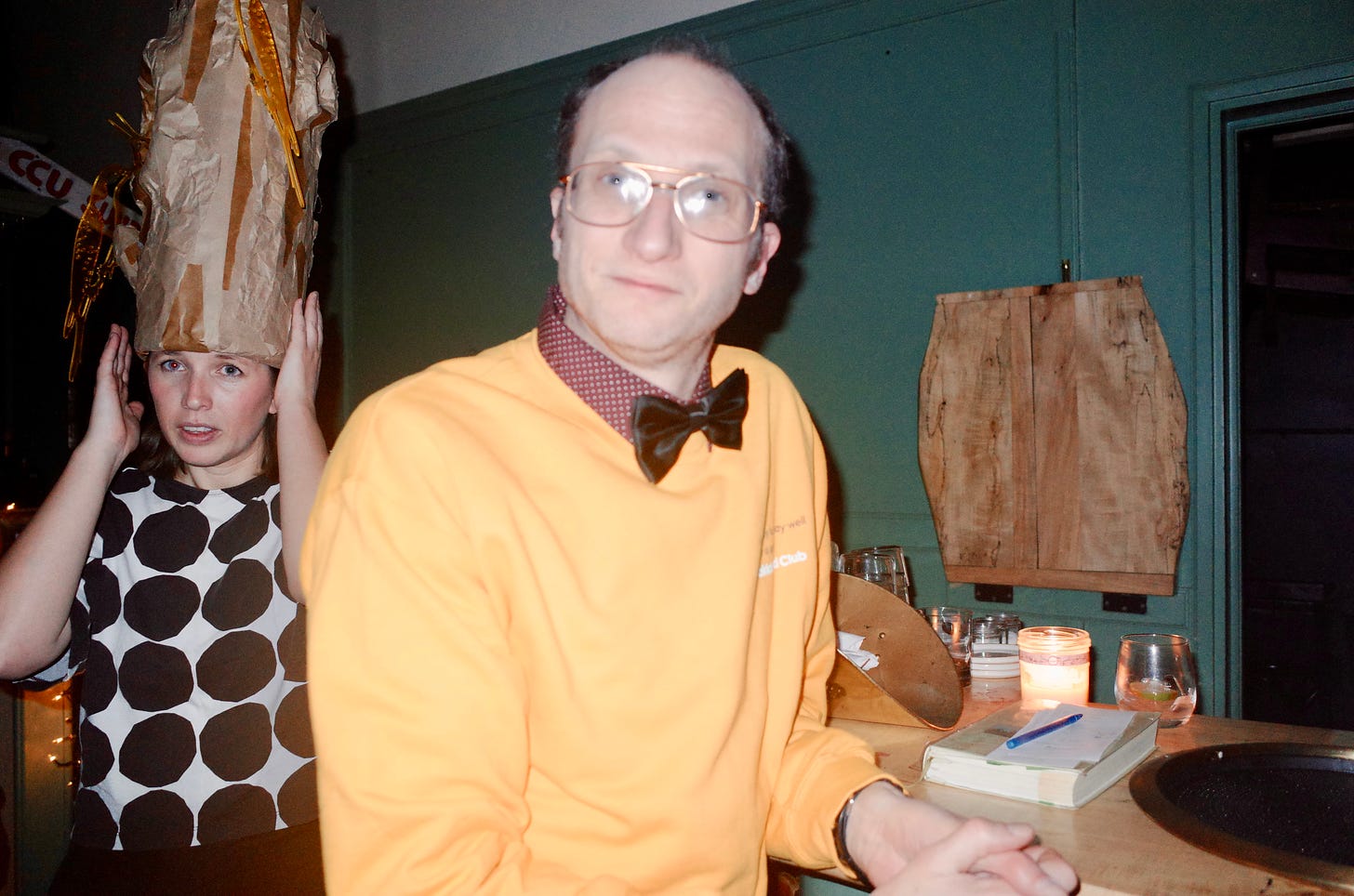
What’s that? You want more snaps, you sweet freak? Try here and here. And in lieu of a March-specific playlist, chomp on DJ Grackattack’s Bird of the Year Mix:
TOOL TIME
WARNING: This section of The Noticer’s Monthly implicitly recommends screen usage. Our screens are otherworldly, transcendent, attention stealing, life ruining and deadly. If you want to do one good thing for your mental health today, you’ll hurl your rectangle(s) into the nearest river. Seriously, if you need help, check out these resources.
Too many birders are obsessed with tools. Us McGolrick Bird hotties? Eat dirt, Tim. Besides a good pair of binoculars (we like these too) and the camera you already own, all you need are clear eyes or ears, plus a full heart. (Can’t lose!) But before you go sprinting into the forest—senses on, butt-naked—consider this: Spring Migration is right around the corner, and a novice noticer’s birding practice can benefit tremendously by a use or two of the below tools.
iNaturalist
Gist: This app is 🐐’d because A) Jenny Odell recommends it B) the photo ID feature (upload photo —> species name suggestion)—that covers all creatures, including plants—is the best around. [iOS, android]
What we’re into: Besides photo ID, we also use iNat to browse laypeople photos of nearby birds. What’s great about this approach is—unlike guides featuring professional photos or illustrations—you can get a hyper-local + realistic sense of how birds who’ve actually visited your hood actually look. (Get a taste with this custom view of McGolrick Park.)
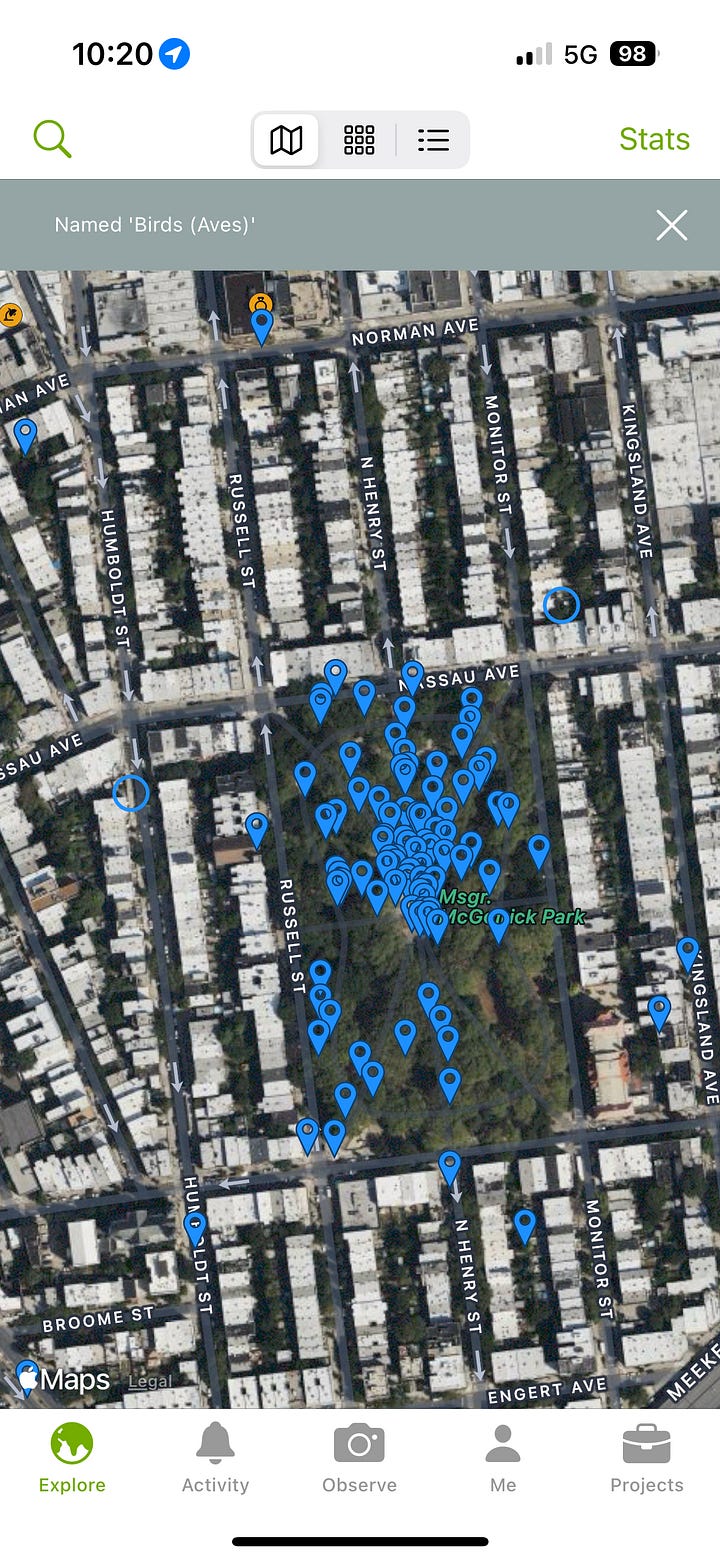

Quick Instructions for local sightings:
Tap Explore
Tap 🔎
Search for Aves —> Tap Find organisms named Aves —> Tap Birds
Blue markers should pop up. You can click into those or toggle (top-middle) to grid and list views
Pay attention to dates—nearby birds may be seasonal
Quick Instructions for photo ID:
Tap Observe
Take a photo or Upload/Add one from your library
If uploading, make sure you set location (approximate is okay)
If using camera, do your best—zoom-in and/or crop
Tap What did you see?
A list of suggested species will appear. Tap the ℹ️ for more info and additional reference photos.
Once you find a good-enough match, tap the species —> then tap Share. Members of the iNaturalist community will review and verify your sighting
Merlin (Bird ID)
Gist: Two killer features: Sound ID: Shazam for freaking birdsong! + Explore: the easiest way to quickly find out what species are findable given a location/date. [iOS, android]
What we love: Sound ID is obvi dope. And Explore is the best way to get a comprehensive list of likely birds for any area—usually county-wise or equivalent—at any time. Examples:

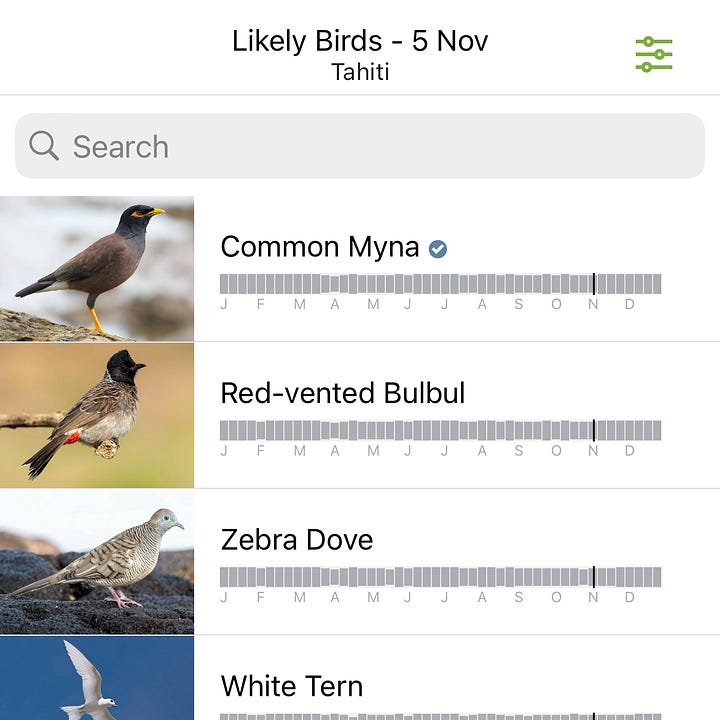
Quick Instructions for Sound ID—
Hear a bird? Tap Sound ID. You’re off!
Watch the app surface species’ names in real-time.
False positives, though very uncommon, do happen. So if you’re hearing an American Flamingo in North Brooklyn, get your grain of salt on.
Quick Instructions for Explore—
Tap the Explore tab
Enjoy a clean, clickable bird overview of nearby birds, from most to least findable
Traveling? Daydreaming of travel? Need to ID a bird image texted by a farflung friend who knows you’re bird horny? Tap the filter icon at the top-right of the Explore page to adjust Location and Date.
If a bird photo is missing, tap the placeholder image then download the most relevant “packet.”
Sibley v2
Gist: Easily searchable app good for studying US bird species. Think Sibley Guide, but pocket-sized. NB: This is the only listed app that isn’t free. Costs 19 bucks, but is good for all, and great for novice birders stepping up their game. [iOS, android]
What we’re into: The app has a Similar species feature that shows easily confused species in a side-by-side view.
Quick Instructions:
So for example, imagine you think you’re seeing a Magnolia Warbler. If you view that species in-app, then tap this icon—
—you’ll see this page:
Sibley is saying Are you sure you’re not seeing a similar species? Click into a similar species and you’ll see a side-by-side like this:
You can then decide whether your IRL bird has the Canada Warbler’s spectacles + necklace ,or the Magnolia’s zorro mask + front-length streaks.
eBird
Gist: The canonical bird database by Cornell’s School of Ornithology. When folks say eBird, they’re referring to either:
The on-the-go app more experienced birders use to log noticed species
What we’re into: While we do use the app to log species seen at McGolrick Park, we highly recommend new birders browse the site for “hotspots,” or places with the most logged species. (You can do this for any location in the world!)
Quick Instructions:
Open ebird.org/hotspots
Type a location into the search field—page upper-right
The results will look like colored pins on a map—use the SPECIES OBSERVED key—page lower-right—to find the busiest (read: birdiest) hotspots. Example:
There’s of course an alternative, very simple way to find places to bird near you. Open Google Maps and just find the green—indicating park or wilderness. The bigger the green, the in-most-cases—and pardon the cheeky rhyme—birdier the scene.






